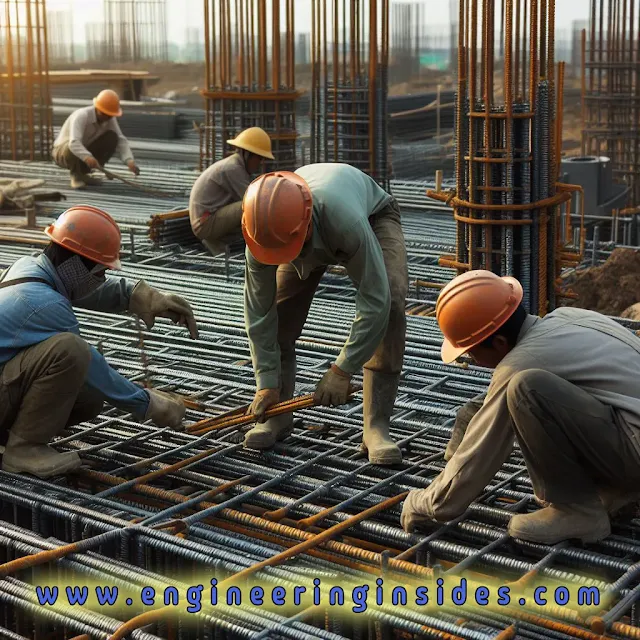What is Development Length:
Development length refers to the portion of a reinforcing
bar embedded in concrete beyond a designated point to prevent slippage and
ensure adequate bond strength. Essentially, it secures the reinforcement bars
in place, facilitating the transfer of stresses and enhancing structural
robustness.
Importance of Development Length:
The significance of development length lies in its ability
to:
- Prevent slippage of reinforcing bars
- Distribute stress uniformly across concrete elements
- Enhance the bond between concrete and steel
- Mitigate risks of joint failure and structural collapse
Consequences of Inadequate Development Length:
Failure to provide sufficient development length can result
in:
- Slippage of joints
- Concentration of stress at critical points
- Structural instability and collapse
- Compromised durability and longevity of the structure
Optimizing Development Length for Strength:
Several factors influence the optimization of development
length, including:
- Concrete density
- Encasing of structural steel in concrete
- Distance between steel members
- Compressive strength of the concrete
- Type of steel coating used
Variations in Development Length:
Development length varies depending on the structural
element and the type of stress involved:
- Beams: Development length extends from beam intersections,
ensuring effective stress transmission.
- Compression and Tension: Different development lengths are
calculated for compressional and tensional stresses.
- Columns: Development length differs for compression and
tension, impacting the stability of column-footing connections.
Maximizing Development Length in Concrete:
To maximize development length, consider employing the
following strategies:
- Increase bar diameter
- Extend embedment length
- Use deformed bars
- Opt for epoxy-coated reinforcing bars
- Enhance concrete cover thickness
Applications and Guidelines:
Development length guidelines are outlined in relevant codes
and standards, such as IS codes, ensuring adherence to industry best practices
and regulatory requirements.
FREQUENTLY ASKED QUESTIONS:
What is development length, and why is it important in
concrete construction?
- Development
length refers to the portion of a reinforcing bar embedded in concrete to
prevent slippage and ensure structural stability. It is crucial for
distributing stress and enhancing bond strength.
What are the consequences of inadequate development
length?
- Inadequate
development length can lead to joint slippage, stress concentration, structural
instability, and compromised durability.
How can development length be optimized for strength?
- Development
length can be optimized by considering factors such as concrete density, steel
encasement, member spacing, compressive strength, and steel coating.
What are the variations in development length based on
structural elements?
- Development
length varies for beams, columns, and different stress conditions, impacting
stress transmission and structural stability.
What are some practical strategies for maximizing
development length in concrete?
- Strategies for
maximizing development length include increasing bar diameter, extending
embedment length, using deformed bars, opting for epoxy-coated bars, and
enhancing concrete cover thickness.
How do IS codes regulate development length in concrete
construction?
- IS codes provide
guidelines for determining development length based on the type of bar,
concrete, and structural element, ensuring compliance with industry standards.
Can development length be adjusted during the
construction process?
- Development
length should adhere to design specifications, but adjustments may be made
based on site conditions and structural requirements, following engineering
recommendations.
What role does development length play in structural
stability?
- Development
length ensures effective stress transfer, prevents joint slippage, and enhances
bond strength, contributing to overall structural stability and integrity.
Are there any limitations or constraints associated with
increasing development length?
- Increasing
development length may necessitate adjustments in design parameters,
construction methods, and material specifications, considering practical and
economic constraints.
How can construction professionals ensure compliance
with development length requirements?
- Construction
professionals should adhere to design specifications, conduct thorough
inspections, and follow recommended construction practices to ensure compliance
with development length requirements and maintain structural integrity.


